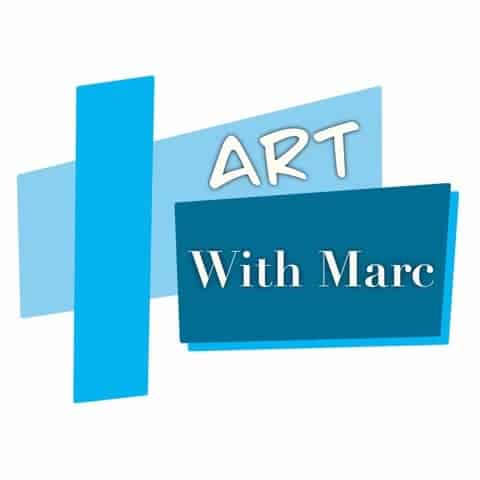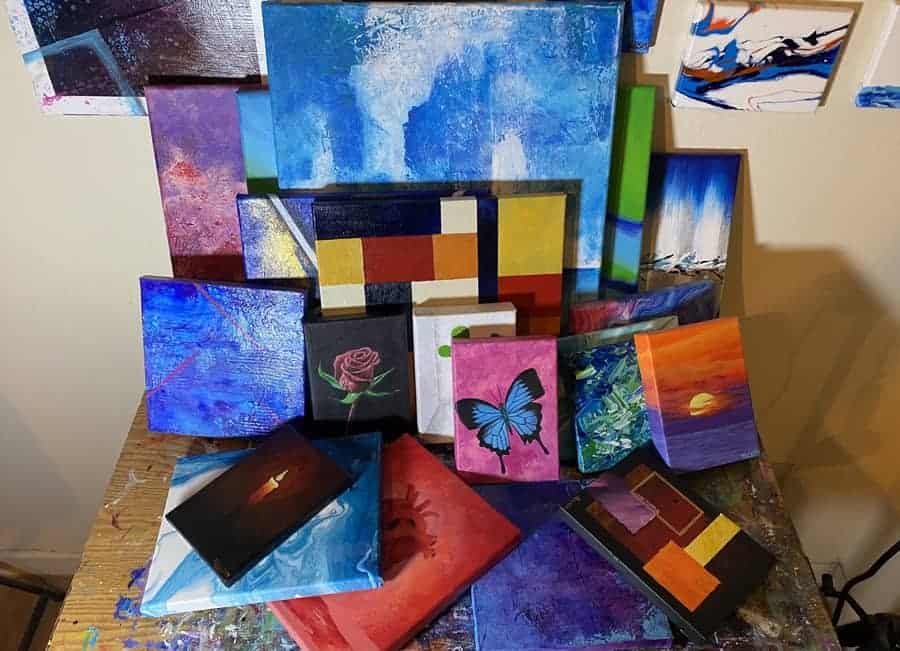
As you begin to get art stacking up, you may find yourself wondering how to start selling your art online. This is definitely something that has been on my mind lately and something I’m about ready to start doing myself.
To get started selling art online, we need to learn about how to market the type of artwork we want to sell and the marketplaces we can sell them at. We need to know how to price our art, how to package it, and how to ship it. We also need to understand printing services and how to use them effectively.
There is a lot more to selling art online successfully than just putting your artwork up on a marketplace and hoping people buy it. There are a number of factors at play that need to work in concert with each other in order to achieve success.
Let’s first explore each piece of the puzzle individually and then later see the different ways that these pieces can be combined to create a money generating machine that will work for you and the artwork you want to create.
Related Articles:
- Starting An Art YouTube Channel
- How to Make a Living Online As An Artist
- Self Taught Artists VS Trained Artists
- Should I Start An Art Instagram?
Market Your Artwork With SEO Techniques and Social Media
When it comes to getting people to where your artwork is for sale online, there are a variety of ways to approach this problem.
First off, if you are here reading this page then I assume you either have an inventory of physical artworks you are looking to sell, perhaps a portfolio of digital artworks, or maybe you are just beginning to get to a confidence level with your skills that you want to know what you would need to do to make money with your art.
I am at a place where I have all three. I have plenty of canvas paintings to sell. Not as much digital art really but that will grow in time. The last one though, the confidence in my skills is key because sometimes it’s best to work backwards from what people are already buying or searching for.
Like what Juna of Detour Shirts shows in this awesome YouTube video here! I’ve set this video to play at the very beginning of his brainstorming process.
Juna is a graphic designer and t-shirt designer. His channel is geared towards helping those of us who want to get into t-shirt design and he provides a lot of great information. Click here to subscribe!
This video is a great example of what I’m talking about and how one can use a platform’s own search engine to find trends and information on what you might be able to design that sells.
In this example, he is working within Redbubble. He’s actually doing a series on it and how to do it successfully.
What Is SEO and How Can it Help an Artist?
Once one has a grasp of search engines and how to mine information from them, you can then create products like T-Shirts based on what is already selling and being searched for.
This will ensure that what you create is in demand and has a higher chance of selling.
Beyond that, when it comes to selling your physical works such as canvas paintings, knowing how to optimize your listing to play to the search engine’s algorithm of the platform you are using will go a long way towards getting your work in front of potential buyers.
The practice of optimizing your content for searches people are performing is called search engine optimization. It is more commonly referred to as SEO.
Knowing how search engines can drive traffic for years to come is honestly a big part of what this site is about. For me, it’s a way to deepen my skills in art while I’m building my brand by creating content that will win in Google’s search results.
What you want to do as an artist on a particular platform is to do some research within the platform’s search engine, just like what we saw Juna do above, only instead of looking for ideas on what to create you’re looking for ideas on how to title and describe the work.
Once you have a good idea of what people are searching you want to use those search terms in your postings. That said, this is just a general understanding of search engine optimization and how it works.
While I don’t have a lot of hands-on experience with any of these platforms yet, I do have experience with how to get on first-page search results in Google. I will be working on Pinterest and YouTube next and then I will move on to figuring out the intricacies of the various platforms where you can sell your art.
This is part of what I will be testing and figuring out here and on my YouTube channel in the months to come.
There will be other more in-depth pages and videos on how to best do this for each platform so be sure to bookmark the site or subscribe to the YouTube channel.
I want to become a master of this entire topic of how artists can make money with their art online! This way I can help be your guide through the wilderness and guide you to a path suitable to you!
That said, I point to a number of YouTube channels and resources throughout this page that will help get us both started.
Marketing Your Art With Social Media

Moving on to the different social media options.
Everything I talk about in this section can be used as a tool to market who you are and what you do when used properly. This will eventually lead to sales over time.
Instagram is currently the most popular social media platform for artists to build a following on. In way of social media platforms, Instagram is perhaps one of the most appealing marketing platforms for artists since it is a visual platform.
While it is mostly static pictures it is beginning to lean heavily into video content. Clearly video content is what people gravitate more towards these days.
It is difficult to build up a following on Instagram if it is the only thing you are doing but I have found it can be done through the strategic use of hashtags. We will have to go into more depth on another page on techniques for how to grow your following on Instagram but the very basic thing you can do is post multiple times every day experimenting with different hashtags.
Certain hashtags will increase the number of people your post is exposed to outside of your followers.
Since I have this website and have some data to work with when it comes to the marketing potential of Instagram, I know a single post directed towards driving people to a particular page on this site is very effective.
At least for that day.
So it should work in a similar way when driving people to a sales page where they can buy what you are selling.
To ensure that traffic translates into sales, when posting on Instagram you need to make sure to engage with your audience. This goes for any platform you use that provides that opportunity for social interaction.
I generally just make sure to respond to anyone who comments or direct messages me.
Not just respond incoherently though. Respond with substance and value by elaborating on some aspect of the painting that was difficult. Answer any questions that might come up too.
While doing research for this article I came across a YouTuber Dries Ketels who sounds like he has a decent handle on how to sell art online. For Instagram, he makes the recommendation to go into the likes of your post and direct message the folks who are liking your art to ask them what they liked about it.
He suggests some of these people might just be shy and that this is a good way to create that connection with those who are following your work but don’t leave comments.
It sounds like a good idea to me! To learn more from Dries click here to go subscribe to his channel!
Instagram is just one of many potential tools at your disposal though.
Another common tool used to build up your name and drive traffic to where you are selling your art is Pinterest. Pinterest is great because when it is used right it can provide you with organic reach.
If you’re not sure what organic reach is, it’s the ability for your content to be distributed to people without you paying for it to happen. This is the sort of reach we are seeking when we are looking to optimize for search results.
I can’t tell you how many times I have come across a piece of artwork on Pinterest that ultimately links back to the artist’s website or sales page. It works when it comes to driving traffic.
The alternative to organic reach would be buying adds. Which is actually not a bad tactic when done right. Again, I prefer the free traffic provided by search engines but ads can be worth the investment on the right platform.

Pinterest in particular is interesting because it functions as both a social media platform and a search engine. Search engines drive a lot of organic traffic when you know how to get your post on first page search results.
Pinterest offers this sort of opportunity with the added bonus that it is a platform that greatly encourages the creation of collections. So if someone sees your piece of art and then pins it to their board that will increase the potential visibility of your work.
Allowing even more people to chance to discover it and collect it too. Some of these people will click through to the website or storefront that the picture connects to leading to sales.
Pinterest, Google, and YouTube can drive traffic to your sales page for months and years to come with a single post or video done right. When it comes to driving traffic and getting sales, organic reach is what we should be shooting for.
Especially if we want to leave more time to be creative. Any platform or tool that can provide that organic reach is what we want to prioritize using.
These are generally platforms that utilize some form of search engine optimization tactics as well. (SEO)
Another great platform that has been blowing up in the past few years is Tiktok. The potential to have a video get thousands, tens of thousands or even millions of views on Tiktok is much higher due to how their algorithm works.
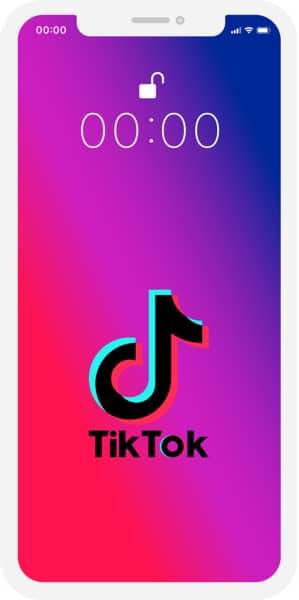
At least for now anyways.
Now Instagram has its Reels feature too which is supposed to work in a similar way. Plus since it is a new feature (released in August 2020) they will want to be pushing it too. Always use new features on a popular platform when they come out.
New features will always have some organic reach because the company wants people to use them.
That said, Tiktok does still have a TON of users making awesome art videos. These short video constraints push one to become creative in the way they present their artwork or their process leading to huge responses.
Clearly, between all of these platforms, there is a heavy move on the internet and hunger for more video content. Use that.
Another platform I have seen being used successfully by artists to market their artwork is LinkedIn. Gary Vee constantly talks about it having organic reach but I’m not sure how relevant that still is these days.
I don’t have too much experience using it regularly but I have met artists on it who make a decent amount of sales using it to market their work. There is a more tenured market of high earning professionals within LinkedIn’s social ecosystem.
These are people who are generally older, more connected, and have disposable income.
YouTube is another great way to generate interest in your work and potentially drive sales. There are a lot of ways for an artist to approach YouTube and many artists are able to bring in a nice stream of revenue just from the advertising on YouTube alone.
I’m definitely for finding ways to earn residual income streams from one piece of artwork! YouTube is one way of doing that if you are just filming yourself painting and putting ads on it.
That is just one way to monetize your audience too. You could get big enough to get a paid sponsorship or come up with other products to pitch at your audience. Maybe you create an e-book or online course to help them out with their art.
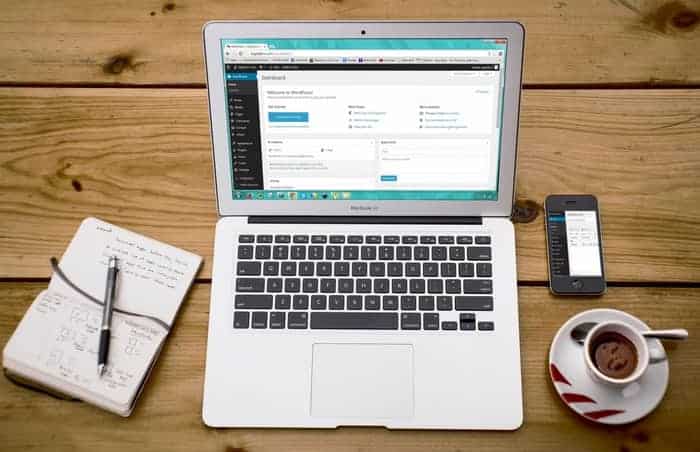
Blogging is the next best thing after YouTube. It takes a lot longer to rank in the search engines and get traffic coming in but it’s worth the effort.
Creating a blog to target art related things people are searching for (search engine optimization) is yet another way to build up your brand name and drive awareness of your work. It takes a lot of effort but if you can win first page search results in Google for something a lot of people are searching for, then that will bring in thousands of people a month in organic traffic for years to come.
This goes the same for a lot of the print on demand sites you might be interested in putting designs on. More on that later.
Another option you can take advantage of is to build that relationship with your audience is by building an email list. Email lists can allow you to have a bit of ownership over your audience too.
This way if something happens to any particular platform you are using to grow your audience, you have a way to bring them with you to the next big thing.
Then there is the benefit of being able to build up towards some sort of sale or product launch. Imagine having an email list of ten thousand people all interested in your artwork and what you are doing and being able to tease them with an upcoming release.
I don’t know what the percentage of conversion rate would be but I bet it would be higher than what you might get from ten thousand followers on Intagram.
Especially if you have built up the expectation of a product launch over the course of multiple emails.
Titling your artwork and creating a narrative for it is another marketing tactic to consider employing as well. I have seen this technique around and have heard it helps to build that connection with your audience.
Giving the piece a bit of character and the artist a bit of depth.
Pricing Your Artwork

Pricing your products is always one of the toughest things for any business owner to do. Pricing psychology is this whole huge fascinating thing to study too.
Luckily, when it comes to pricing our artwork there is a lot of information out there we can base our prices off of and some very basic formulas we can use as a baseline.
First, you should look at the market that you will be selling your work in to see what similar artwork is selling for.
Then decide on which formula you want to use to calculate the prices for your work. By using a formula you can keep your pricing consistent.
I like the three formulas proposed in this article by artworkarchive.com.
- Square Inch x Dollar Amount – This is when you decide you want to charge a specific amount per square inch. As an example, if you charge $1 per square inch you would sell a 5″ x 7″ for $35.
- Hourly Wage x Hours Spent + Cost of Materials – This one, in particular, is less appealing to me personally as I rarely keep track of things like hours spent on a piece. More than that, I often buy my materials in bulk so trying to discern how much I spent on materials would be a challenge. Ultimately though, if you spent 10 hours on a piece and want to make 20 dollars an hour you would charge $200 plus your cost of materials.
- (Height + Width) x Price Per Inch– This is pricing per linear inch. For a 5″ x 7″ canvas it would be 5 + 7 = 12. Then 12 x $3.00 per linear inch brings the total to $36.00.
Between these three approaches, when I go to sell my first paintings I’m going to assess my market first and then use the square inch times the dollar amount formula.
This seems like the best approach for me with what I currently know and where my skills are at right now.
Additional costs to consider when setting your prices is the cost of framing your artwork, packaging and shipping, transaction costs, and taxes.
Be sure you are setting your prices high enough to cover all those costs and ensure you are still making a nice hourly wage or profit.
It doesn’t seem there is an easy formula to use when trying to figure out how to price limited edition prints. If this is what you are looking to start with you will want to take a heavy look at standard pricing for a limited edition run of the type of artwork you are looking to produce.
What is the average?
That probably is the best way to figure out a good price to set your work at.
Keep in mind that setting a competitive price for your market is a marketing strategy. Sometimes it is a good strategy to undercut the competition. Especially when you are just getting started.
This is a bit of a sidebar to selling art online but one interesting strategy I learned while researching this section altered how I view having my work sold in a gallery.
For a long time now I have wondered why would I want to give 50% of my sales to a gallery when I can just as easily sell my work online.
What I discovered while writing this is that there are two main reasons why you might want to consider it if a gallery makes the offer. First, it raises your credibility and brand as an artist.
When a credible gallery wants to feature and sell your work it gives you more authority as an artist.
The other major reason why I would now consider it if I ever got the offer is it can help raise the value of one’s work.
Often times, since a good gallery will be advertising and marketing your work, they will need to sell your paintings for a lot more than what you might normally sell them for on your own.
Once you get taken on by a gallery that starts selling your $1000 paintings for $4000, you can and should then start selling your $1000 paintings for $4000 when you sell them on your own.
This not only will raise your potential income from your work but also go a long way towards maintaining a good relationship with the galleries that want to host your work.
Where To Sell Your Art

The answer of where to actually sell your artwork is going to vary depending on what sort of artwork and products you are looking to sell.
As we already discussed, sometimes you will want to approach it the other way around as well. By this I mean if you want to sell art on Merch by Amazon then you will want to create artwork with that in mind.
So instead of looking for platforms to sell your artwork on, you’re looking to create artwork that is selling on the platforms you want to sell on. I think both approaches are useful and I personally will be utilizing both to my advantage.
Especially since I have quite the collection of canvas paintings built up. I’m going to need to make some space eventually!
There are a variety of marketplaces to host and sell your artwork online with each having its own pros and cons.
There are so many in fact, I couldn’t possibly go over them all here so I’m just going to cover the ones that I am currently aware of and were able to find.
In due time, I will try every avenue there is for selling your artwork so I can equip myself with real-world experience on how YOU can sell YOUR art online.
For now, let’s just stick to identifying what those places are and how they can potentially serve our needs.
- Etsy – A great place to sell a variety of handmade products as well as print on demand ones too.
- eBay – One of the oldest, if not the oldest, online auction market where you can sell anything from paintings to sculptures.
- Instagram (DM) – While Instagram is primarily an outlet for marketing it can be used to generate sales.
- LinkedIn – LinkedIn is another example of a social media outlet that one can use to market that can also double as a sales lead generator.
- Website Storefront (Shopify, Woocomerce etc.) – For this category of options you would need your own domain name but there are benefits to having your own storefront.
- Print On Demand Websites – A wide array of websites are now available that will allow you to offer your artwork to your audience on a wide variety of products.
- Facebook Marketplace – Facebook now has an internal marketplace where one can post their artwork for sale.
These are the places that you can either generate sales leads and redirect them to a transaction page or do both in one spot.
Some of the platforms and techniques you use to market can also serve as avenues to generate sales leads.
As an example, you can do a sales promotion on your Instagram account and have people direct message you for more details. Maybe at that point, you negotiate a price for something posted on your Instagram feed and then once you agree upon a price make the transaction at Paypal.
I honestly don’t feel too comfortable with a setup like that but it certainly is one possible route to take.
You can alternatively put a link to your storefront in your bio and have prospective buyers click through to it. This way they land on a storefront where they can view your available pieces and then proceed to buy without the need for a back and forth negotiation.
Perhaps you are using LinkedIn and Instagram to grow your audience and Etsy as your storefront.
There are so many potential combinations of how to approach selling your artwork online that there should be no such thing as a starving artist these days!
Before we can wrap this page up we need to talkin more detail about the various print on demand sites there are available.
I wrote a page a few months back called “Print On Demand for Artists” that you can check out here!
That said I have learned quite a few things about them in the past few months so I want to cover it again in the next section.
Print On Demand Sites and Experts To Learn From
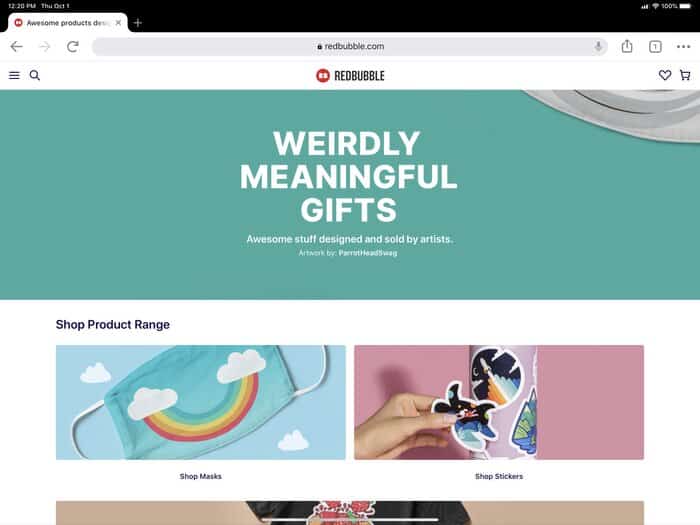
Print on demand services offer artists like us a unique chance to sell products that used to require a lot of up front capital in order to sell.
Back in the day, if you wanted to sell your designs on something like T-Shirts you would either need to stock up on a bunch of different sizes in the print that you want hoping that people would want to buy them or you would need to buy your own printer to make them to order.
Now we have the luxury of being able to sell such things to order and set it up in a way that is nearly entirely automated!
How great is that?!?
Let’s start by listing the vast array of Print on Demand options:
- Printify
- Printful
- Redbubble
- Society6
- FineArtAmerica
- Merch by Amazon
- Kindle Direct Publishing
- Displate
- Spreadshirt
- Shirtee
- Teepublic
- Threadless
- Teespring
- Zazzle
These are all companies that offer some form of print on demand drop shipping. Some of them handle nearly everything for you while other’s need to be setup in conjunction with a storefront like Etsy.
To utilize these resources successfully there are a few awesome YouTube channels I want to point out to you that you can learn from until I am able to conduct my own detailed experiments for this site.
I can’t entirely remember how I first stumbled onto the Print On Demand game but I know the first person I saw talking about it a lot was Sarah from Wholesale Ted.
Sarah has one of the best channels on this topic and can really help you understand what sorts of product designs sell and why.
She is one who talks about how to set it all up so that it is as passive as possible. This way you can spend more time creating and less time processing orders.
I’m not familiar enough yet with all the available options to explain how she does this but she is a great resource of information!
After Sarah, my next recommendation is Ryan Hogue’s Passive Income channel.
Ryan also does a lot of analysis of designs and what is trending. This will give you a good idea of how to do research to find ideas for designs that will get sales.
The other thing Ryan talks about a lot is maximizing your design by uploading it to ALL of the platforms. He has figured out some system for doing this.
This dude is making bank and knows his stuff. He puts out a TON of content and his channel and it is growing rapidly. Which personally, I think is a testament to the quality of his content and authenticity.
When I am ready to take a course on this it will either be his or Sarah’s from Wholesale Ted.
It’s either that or I’m just going to figure it out on my own.
The last channel I would recommend checking out and following is the channel I featured at the beginning of the article, Detour Shirts by Juna.
I have gotten value out of his videos and learning about his approach to Redbubble.
His channel is still relatively small but I have a feeling his will be growing pretty nicely over the next year so keep an eye on him and listen to his advice.
There is something to be learned from each one of these channels about how we can make money with our art online. I highly recommend subscribing to each one.
Selling Limited Edition Prints of Your Artwork
One last thing we need to cover is limited edition print runs.
When it comes to actual prints of your artwork, the kind that people want to frame and hang, there is a problem with selling those sorts of prints through print on demand.
When using print on demand to sell wall art there are two basic approaches. You can do an open edition print of a design meaning that it will always be available to order and that many copies will be sent out.
The more common approach for selling prints of wall art would be to do a limited run. A limited run is when you only produce x amount of copies of a given piece of artwork.
Thus increasing the value of each piece.
Furthermore, when people order a piece of artwork in this way they will commonly request that you sign it or expect that it will be signed.
So in the case of a limited edition print run you would want to source a local printshop. This way you can actually sign and number your work before you send it out.
As an example if you were doing a limited edition run of 50 prints you would number your first print as 1/50. This way each customer knows which one in the series they own.
This would require more work on your part as it would require you to process orders, package them, and ship them.
Putting The Pieces Together
Now that we have a good idea of all the various mechanisms we need to know about to get started selling art online, we must go forth and utilize them.
Clearly, all of this requires work on your part. Work to learn and understand the various angles one can choose to approach the problem from.
What is in sync with your personality and your current capability? Start with what you CAN do and let it lead you to what you need to do next.
With that said, I’m going to go get my Redbubble account started! You should take some action right now too!
